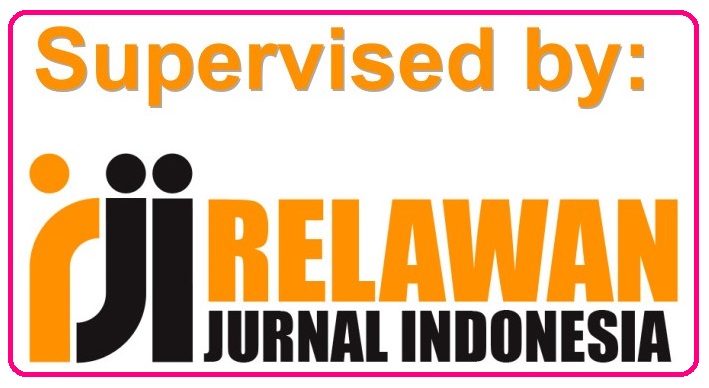Types of manuscripts eligible for Elsya : Journal of English Language Studies (E-ISSN: 2684-9224; P-ISSN: 2684-7620):
Research Articles are full-length papers of your original/novel contribution to the relevant academic disciplines. Elsya accepts your manuscripts of research articles that contain at least 6,000 and maximum 18,000 words (not including Abstract, References, and Appendix). This type must separate its Results and Discussion into two different sections.
Literature Review/Overview Articles are summaries of the state of the art on a topic. This document needs to systematically display the current and latest literature data and show the pattern of themes that emerges with the goal of pointing out new areas and research gaps for future studies. This document type may combine its Results and Discussion into one section. Minimum 4,000 words (excluding Abstract, References, and Appendix).
Academic Essays which aims to answer a specific research question, but may not be necessarily based on any research project. Every student, of every discipline, in every institution, will at some point write an essay. The structure of this document type would not necessarily require a Methods section and a Results section, but it should include (1) An Introduction: an overview of the essay’s purpose and key contents, (2) A (fully referenced) review of the key topic's history and debates, (3) A discussion of the development of the topic and its debates to a resolution, (4) A conclusion, if necessary, and (5) A reference list. Minimum 3,500-6,000 words (excluding Abstract, References, and Appendix).
Research Notes which are extensions or updates to previously published research are also welcome. This document type typically aims to provide discussions of new data sources, research techniques, and/or research practices that are relevant to the academic disciplines this journal focuses on. 3,500-4,000 words (excluding Abstract, References, and Appendix).
------------------------------------------------------------------------------------------------------------------------------------------------------------
ONLINE SUBMISSIONS
Register or Login with your username/password for Elsya: Journal of English Language Studies.
Authors must submit their papers electronically by using the Elsya online submission and review website (https://journal.unilak.ac.id/index.php/elsya/login). The system will help authors on the steps of the submission process. The Publisher and Editor regret that they are not able to consider submissions that do not follow these procedures. Authors who successfully submitted manuscripts will receive a notification of whether the manuscripts can proceed to peer review or not within 2-5 working days. When revising the manuscript, authors must use Track Changes in Microsoft Word.
Elsya Journal does not charge any submission fee. There is an article processing charge (APC) that must be paid after the paper has already undergone peer-review process and is accepted for publication. The specifics of the fee can be seen here.
If authors have any questions, please feel free to contact the editorial assistant at elsya@unilak.ac.id
MANUSCRIPT GUIDELINES
- A manuscript that has never been published in any other media or journals. The manuscript also does not contain the results of plagiarism, falsification, and fabrication of data.
- The name of the author(s) is written without academic degrees. If a manuscript is written by a team or more than one person, the editor will communicate only with the correspondence author whose Elsya account submitted the paper electronically.
- Should follow Elsya Journal's Article Template and submitted in the .doc format.
- Manuscript title must be 9-15 words, aligned left, in Bold and font size 16.
- Must format the manuscript as .doc
- Must include 5 keywords.
- Minimum word count (from Introduction to the end of Conclusion) must be 6,000-18,000 words for an original research paper, minimum 4,000 words for a literature review/overview paper, 3,500-6,000 for academic essay, and 3,500-4,000 for research notes.
- One column layout.
- Font type: Calisto MT.
- Font sizes: 16 for manuscript title, 12 for main headings, 11 for subsection headings, 10 for author names and body text, 9 for author affiliation(s), email address(es), abstract text, keywords, body text, interview excerpts/quotations.
- Figures must be formatted in Windows Bitmap (.bmp).
- Indent when starting a new paragraph.
- Cite at least 25 references of current studies.
*To support the language quality of the papers, Elsya Journal has partnered with Unilak Language Editor Team (ULET) to provide language editing and translation services for a fee. Note that employing the use of such services is not mandatory and using it, or any other language editing service, does not guarantee the acceptance of the manuscript as all submissions are subject to peer review. Please contact the managing editor Ms. Tatum Derin for more information regarding ULET's services by email: td476@cam.ac.uk
STRUCTURE GUIDELINES
Title
- The title should summarise the main idea or ideas of the manuscript.
- The title must be in at least 9-15 words.
Abstract
- A clear statement of the problem (1-2 sentences should suffice).
- State the research gap the study is addressing.
- Provide the proposed approach or solution.
- Give the key details of the method (i.e. research design, data, data collection and analysis technique),
- Include 2-3 major findings and the implications of the results or the significance of the study’s contributions.
- 200 to 275 words; it cannot be not be a copy+paste from a passage in the manuscript text.
- There should not be any in-text citation, except if the research uses a certain previous study or theory as a primary reference.
- Write in British academic English (see guideline to British vs American spelling).
- 5 keywords.
Introduction
- Start with a general statement that covers "the whole of your research" which can clearly identify the problem/phenomenon and why your study is necessary (Guide to framing a strong research question/objective).
- State the research gaps, your research objectives, and the novelty that your research offers or its implications.
- Include a review of the relevant and recent literature that gives context to the manuscript’s position within the current research field.
- When you use direct quotes from a cited study, indicate the page. Example: “…” (Author, 2020, p. 27).
Literature Review
- The literature reviewed must primarily contain current studies that are relevant to your research. It may include old studies if necessary, but cannot overly rely on outdated sources.
- The literature review should evaluate the contents of the cited literature and draw its relevance to the author's research, rather than simply retelling or summarising previous studies’ findings.
- Do not overuse direct quotes, definitions, points, examples - focus on reviewing the relevant studies' findings to establish the position of your own study.
Method
- Provide sufficient detail so that editors, reviewers, and future researchers can understand and replicate the study.
- Specifically state the data sample, collection method and data analysis.
Results*
- Describe the results. If appropriate, present the results as a table or figure.
- Excerpts should have codes (which is up to the authors). If you are unsure of how, please read this basic guide to coding qualitative data to familiarise yourself with the concept.
Discussion*
- Reiterate the most significant results, but do not repeat what has been written in the Results section.
- Interpret and describe the significance of and possible/definite reasons behind these results in light of what was already known about the problem/topic (which must include a review of the relevant literature).
- Explain any new understanding, insights or contributions that emerged as a result of the study. Authors must highlight the novelty of their original research.
- *Results section and Discussion section cannot be combined or merged for original research papers, unless the type of the research is a library study or an essay.
Conclusion
- This is the “take-home message” of the manuscript, so it must consisely answer the research question(s). It should help the reader understand why this research should matter to them (as many tend to skip immediately to this section).
- It is not a simple summary of the paper, but a synthesis of the key points. Focus on the important results and how they filled the research gap, research novelty and its contributions and implications to the larger area of study.
- Do not write them in bullet points, but in 1-2 paragraphs.
- No citations in the conclusion paragraph(s).
Acknowledgement (Optional)
- Give credit to funding bodies and departments that have been of help during the project, for instance by supporting it financially or allowing the research to take place.
References
- Uses the APA 7th edition (see the APA guide).
- Authors are recommended to attach doi links of the cited studies. The links are formatted the same as URLs because the label “DOI:” is no longer necessary.
- Minimum 25 citations of current (published within the past 5-10 years) literature. 80% of the citations must be journal articles.
- Using reference managers such as Mendeley, Zotero and others are not mandatory, but would enhance your manuscript.











 Elsya Journal is licensed under
Elsya Journal is licensed under 